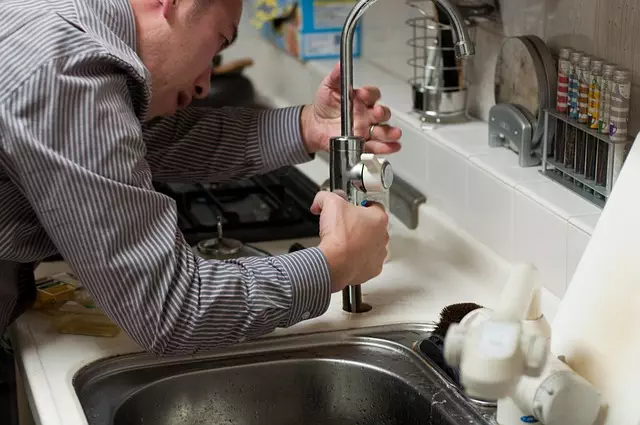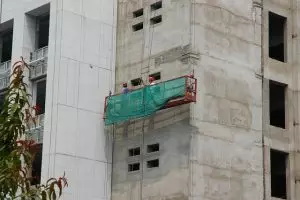Basement leveling is essential for homeowners with sinking floors, addressing structural issues like cracked walls and doors. Regular inspections by Foundation Contractors detect common signs of needed leveling, preventing further damage. These experts use advanced techniques like mud jacking and polyurethan injection to stabilize and level basements, enhancing property value and functionality. Material choices, project costs, and maintenance after leveling vary; engaging experienced Foundation Contractors ensures the best solutions tailored to individual basement conditions.
“Residential basement leveling is a crucial home improvement process, offering both functional and aesthetic benefits. This comprehensive guide delves into the essentials of basement leveling, from understanding its basic concepts and advantages to recognizing common signs indicating the need for this service.
We explore the expert role of foundation contractors, the techniques they employ, material options, and cost considerations. Additionally, we provide valuable post-leveling care tips, ensuring long-lasting results. For homeowners seeking reliable solutions, engaging with professional foundation contractors is key to transforming unwanted basements into valuable living spaces.”
Understanding Basement Leveling: The Basics and Benefits

Basement leveling, also known as foundation settling or mud jacking, is a process that addresses the issue of a sinking or uneven basement floor. This technique involves injecting a mixture of concrete and water into the voids or cracks beneath the basement’s surface, effectively raising and stabilizing the floor. Understanding this method is crucial for homeowners considering their options to level their basements, especially when dealing with issues like cracked walls, uneven floors, or doors that stick.
The benefits of basement leveling are numerous. Firstly, it improves the structural integrity of your home by distributing weight evenly across the foundation. This can prevent further damage to the basement and surrounding areas. Secondly, it enhances the overall aesthetics and functionality of the basement space, making it a more comfortable and usable area for entertaining or living. Additionally, regular basement leveling by professional foundation contractors can increase the property’s value, ensuring that potential buyers are not deterred by issues like sinking floors.
When to Consider Basement Leveling: Common Signs of Need

Many homeowners often overlook issues with their basement until they become significant problems. When it comes to your home’s foundation, timing is crucial. Regularly inspecting your basement is essential, as there are common signs indicating that basement leveling may be necessary. Foundation contractors recommend paying close attention to any noticeable changes in your basement’s structure.
One of the primary indicators is uneven or cracked walls. If you notice vertical cracks, bulging walls, or doors and windows that stick or fail to shut properly, it could suggest settlement issues. Additionally, slanted or tilted floors are a clear sign of trouble. Over time, these problems can lead to more severe structural damage if left unaddressed, requiring costly repairs. Promptly addressing basement leveling needs can help prevent major foundation issues and ensure your home’s structural integrity.
The Role of Foundation Contractors in Basement Leveling

When considering basement leveling, the expertise of foundation contractors is invaluable. These professionals are specially trained to assess and address any issues related to a home’s foundation, which is crucial as it forms the very base upon which the entire structure rests. Foundation contractors employ various techniques to stabilize and level unevenness in basements, ensuring the safety and structural integrity of the building.
Their role involves detailed inspection, identifying the root causes of basement unevenness, whether from soil settlement, poor initial construction, or other factors. Armed with this knowledge, they implement solutions like underpinning, where additional support is added to strengthen the foundation, or using foam injection to fill voids and level the floor. Engaging these contractors guarantees a thorough fix, preventing further damage and ensuring a level, stable basement for years to come.
Techniques Used for Effective Basement Leveling

Basement leveling, a process that involves adjusting and realigning the foundation of a home, is crucial for both structural integrity and aesthetic appeal. Foundation contractors employ several advanced techniques to ensure effective basement leveling. One common method is mud jacking, where a mixture of cement and water is pumped through small holes in the floor, raising sunken areas and creating a level surface. This technique is particularly useful for minor dips or cracks, offering a cost-effective solution without extensive demolition.
Another popular approach is with polyurethan injection. This involves drilling tiny holes in the foundation walls and injecting a flexible polyurethane foam. The foam expands, filling gaps and cracks, and providing exceptional strength while allowing some movement, which is crucial for preventing future damage from shifting soils. These modern methods not only level the basement but also enhance the structure’s overall stability, ensuring a safe and comfortable living space below ground level.
Material Options for Basement Leveling Solutions

When it comes to basement leveling, there are several material options available, each with its own set of advantages and considerations. Foundation contractors often recommend concrete as a durable and cost-effective choice for raising and stabilizing basement levels. This robust material can withstand varying environmental conditions, making it an ideal solution for long-term stability.
Another popular option is foam insulation. While not as sturdy as concrete, foam provides excellent buoyancy and can significantly reduce the overall cost of leveling projects. It’s a lightweight alternative that still offers effective support, especially in less demanding scenarios. The choice between these materials largely depends on budget, desired longevity, and specific structural requirements, with foundation contractors offering expert advice to select the best fit for each unique basement situation.
Cost Considerations: Budgeting for Basement Leveling Projects

Basement leveling projects can vary greatly in cost, depending on several factors, including the extent of damage, the size of your basement, and whether structural repairs are required alongside leveling. It’s crucial to work with reputable foundation contractors who can provide accurate estimates tailored to your specific needs.
When budgeting for basement leveling, consider both material costs and labor expenses. Material costs will depend on the method chosen, such as underpinning or slab jacking. Labor costs include the expertise of skilled professionals who ensure the job is done right. Remember that a well-planned budget accounts for potential unforeseen issues, ensuring your project stays on track without unexpected financial surprises.
Post-Leveling Care and Maintenance Tips

After your basement leveling project is complete, proper care and maintenance are essential to ensure longevity and stability. One of the key aspects is regular inspection. Check for any signs of water seepage, cracks in the walls or floor, or uneven surfaces. Addressing these issues promptly will prevent further damage and maintain the integrity of your newly leveled space.
Foundation contractors recommend keeping the basement area dry and well-ventilated. Use dehumidity sensors to monitor moisture levels and ensure proper ventilation by keeping windows open when possible. Regular cleaning is also vital; sweep and mop floors regularly to remove dust and debris, especially after storms or heavy rain. This simple maintenance routine will contribute to a durable and comfortable basement environment for years to come.
